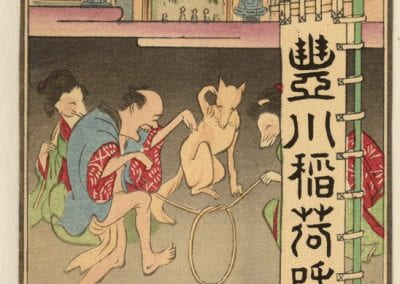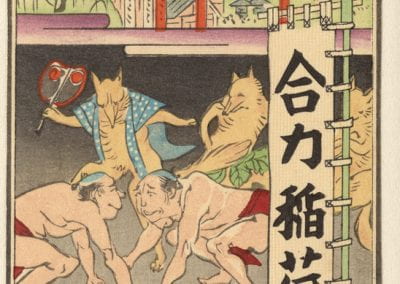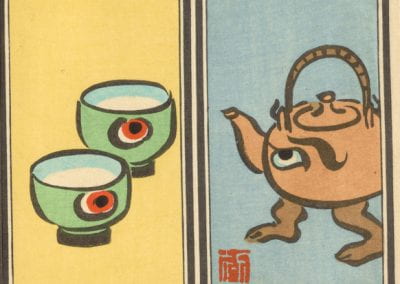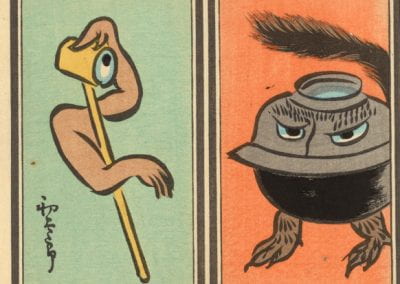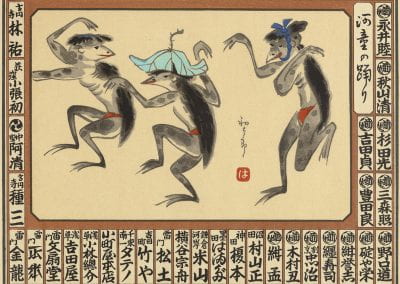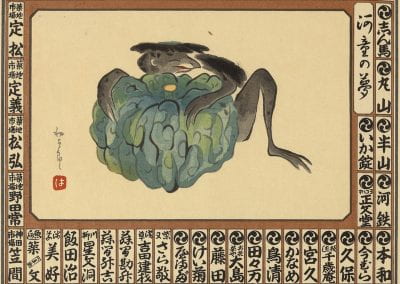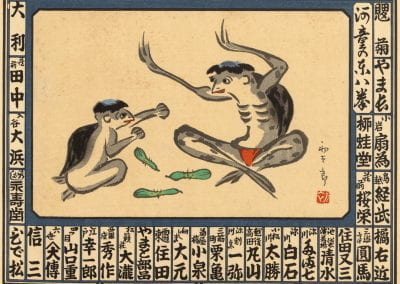The Shōbundō collection
The UO’s collection of senjafuda was augmented in 2017 by the acquisition of the Shōbundō senjafuda collection. This consists of slips and other materials primarily collected by Satō Masao 佐藤正夫 (1901-1982), a professional woodblock printer living in Yokohama who was a participant in senjafuda circles under the daimei (and shop name) Shōbundō 正文堂, and his son Ritsuzō 律三, also a printer and collector. The collection, donated to UO by Masao’s younger son Satō Shirō, includes around forty-five scrapbooks full of senjafuda produced over a period stretching from ca. 1885 to ca. 1990; thousands of unmounted slips from the same period; printing and pasting tools; photographs of senjafuda participants; and many other materials relating to senjafuda culture.
While the Starr collection offers a nearly comprehensive look at senjafuda activities during the period Starr was in Japan and a valuable sample of materials produced during the prior decades, the Shōbundō collection allows us to examine senjafuda activities covering most of the 20th century, while augmenting our understanding of the Starr years in important ways. Its archive of tools, photographs, books, and other materials provide a perspective that slips alone can’t. Together these two collections are a matchless resource for research into senjafuda.
The Shōbundō collection has not yet been digitized, and so the majority of its contents were not available for this digital exhibition. However, as one might expect, yōkai are well represented in its contents, and we’re proud to feature a few of the postwar yōkai from the Shōbundō collection here.
Gōriki Inarisha
A fox figure refereeing a sumo match between villagers while other foxes watch at Gōriki Inarisha
Silhouette of a Lantern Spirit and Kitsune
A silhoutte of a lantern spirit on the right side and a silhoutte of a kitsune
